Setting Up Your Photography Studio II: What Type of Background
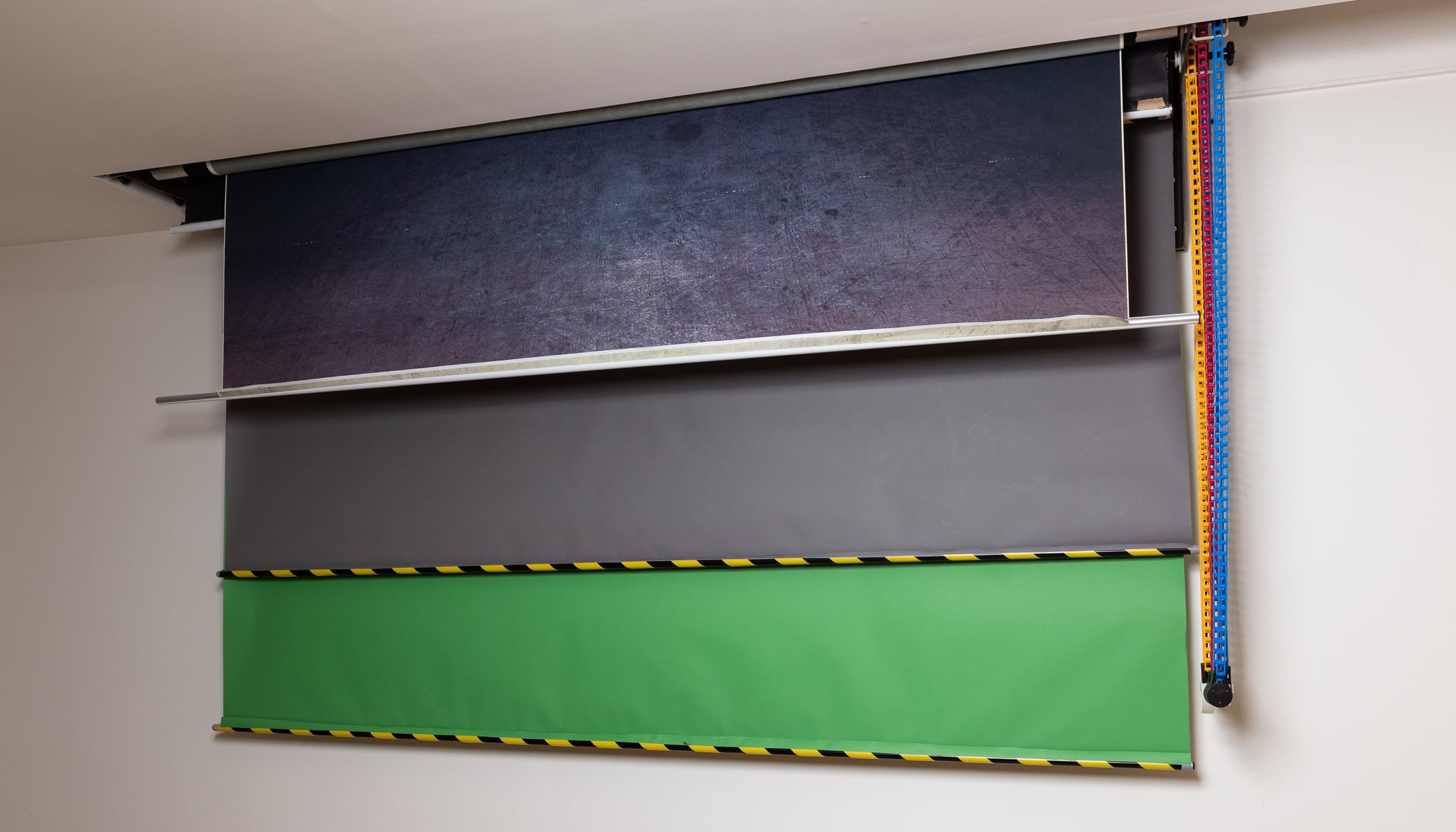
After choosing the lighting for your studio, the next most important step is to choose the background. The majority of people picture a roll of seamless backdrop paper as their studio background, but there are many more options out there. So many that there’s no way you’ll be able to use all of them. Still, it’s a good idea to be aware of the basic background options available to you.
Setting up your own photography studio is a time to get your creative juices flowing. You may decide that you’re going to use a homemade (DIY) background, such as a sequined curtain, and the results can turn out great. As you can see, one article cannot possibly cover all the options available to you, and I will try to cover the most common photography backgrounds.
Small scale photography
The background you choose highly depends on the scale at which you are shooting and the size of your subjects. For smaller items, you don’t need to redo the whole room right off the bat. Simply use a temporary setup that will only take up part of your living room or any other room for the duration of the shoot.
Flat lay photography is shot from above, and a photogenic table or wooden board on the table are more than enough. There are also PVC backdrops with different patterns made exactly for this purpose. These are available in double-sided versions with different designs that can give you more options. However, you’ll need to consider the lights and shadows that are part of the background. So, if you wish to create a particularly dramatic atmosphere for your photos, it may be obvious that you’re not working with a real background.
For shooting ordinary products, you can use a light tent. These can be found in different sizes and consist of some form of a white cube made of semi-transparent material. The outside of the tent is not visible through its sides and so there is no need to keep the rest of the room clean. But, light from outside the tent does seep in through the material. It is then reflected from the cube’s walls to create relatively even lighting with little effort. The advantage is that even larger light tents take up very little space when folded up and can be assembled in a matter of a few moments.
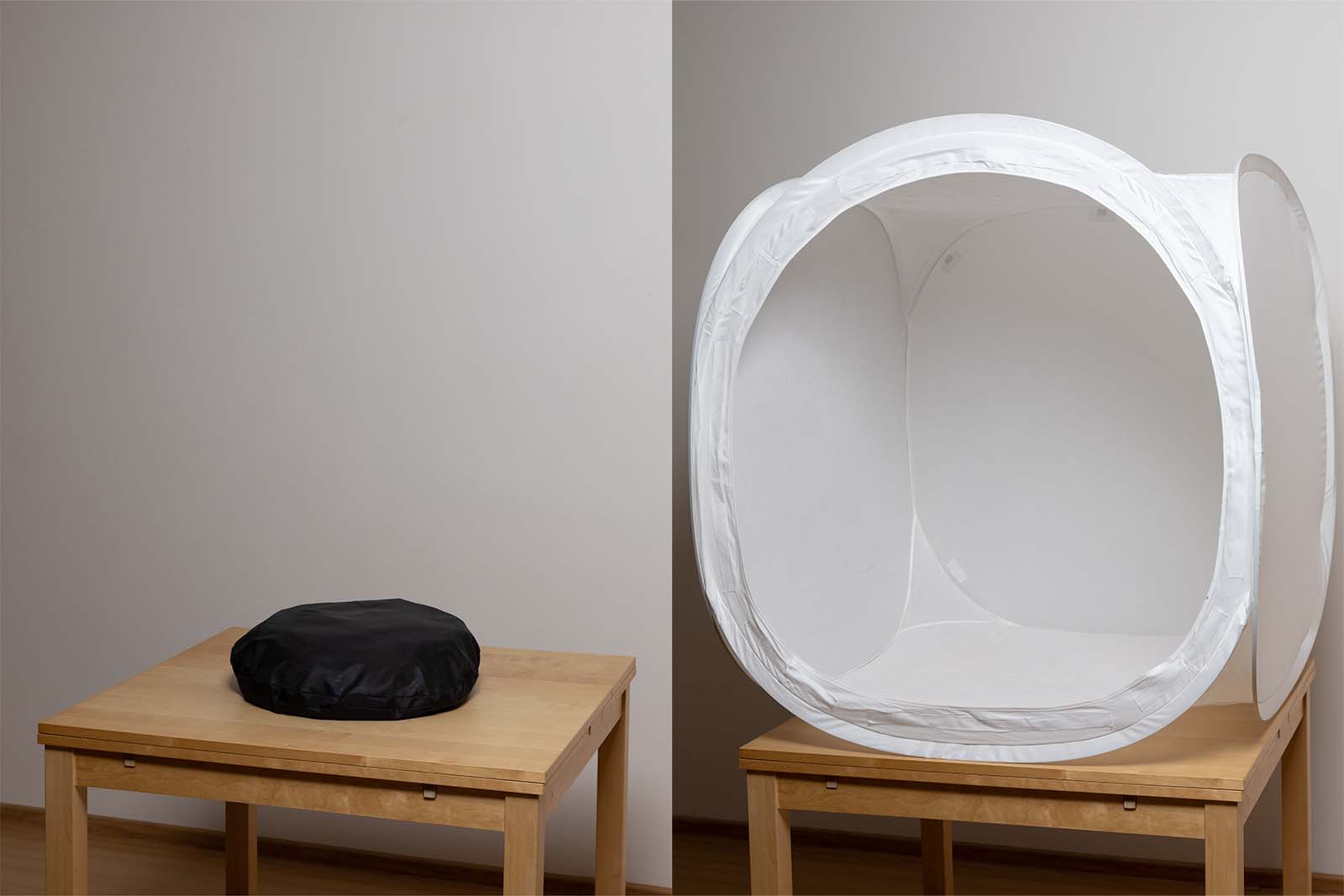
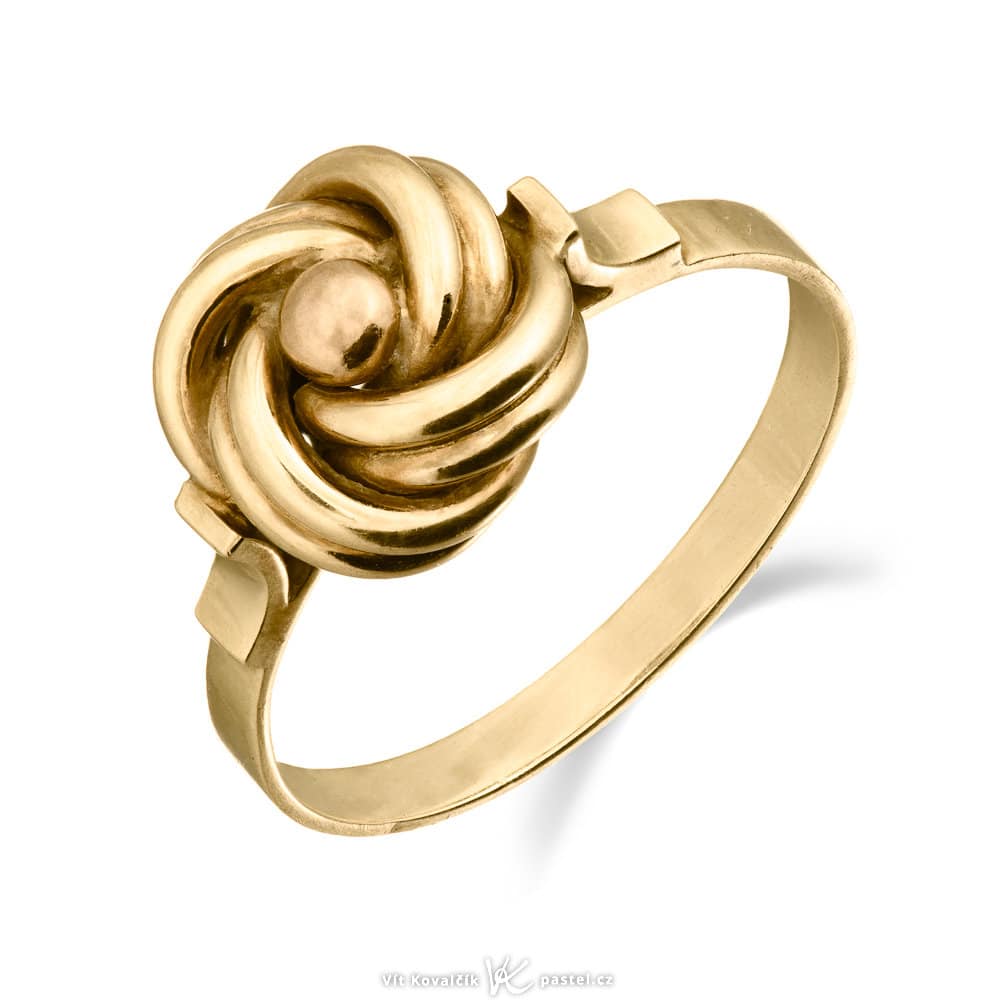
A more complex option is a background shooting table, which also blocks the visibility of the walls of the room. This doesn’t apply to the transparent versions where it’s recommended to have another, typically white background behind it. Compared to the light tent, you have more control over the direction of the light, so it doesn’t reflect from the sides. The top plastic panel won’t bend and remains attractive even in close-up photos. Unfortunately, the table is more difficult to store. There are versions which can be collapsed or set up at different rates and don’t take up as much space as an actual table.
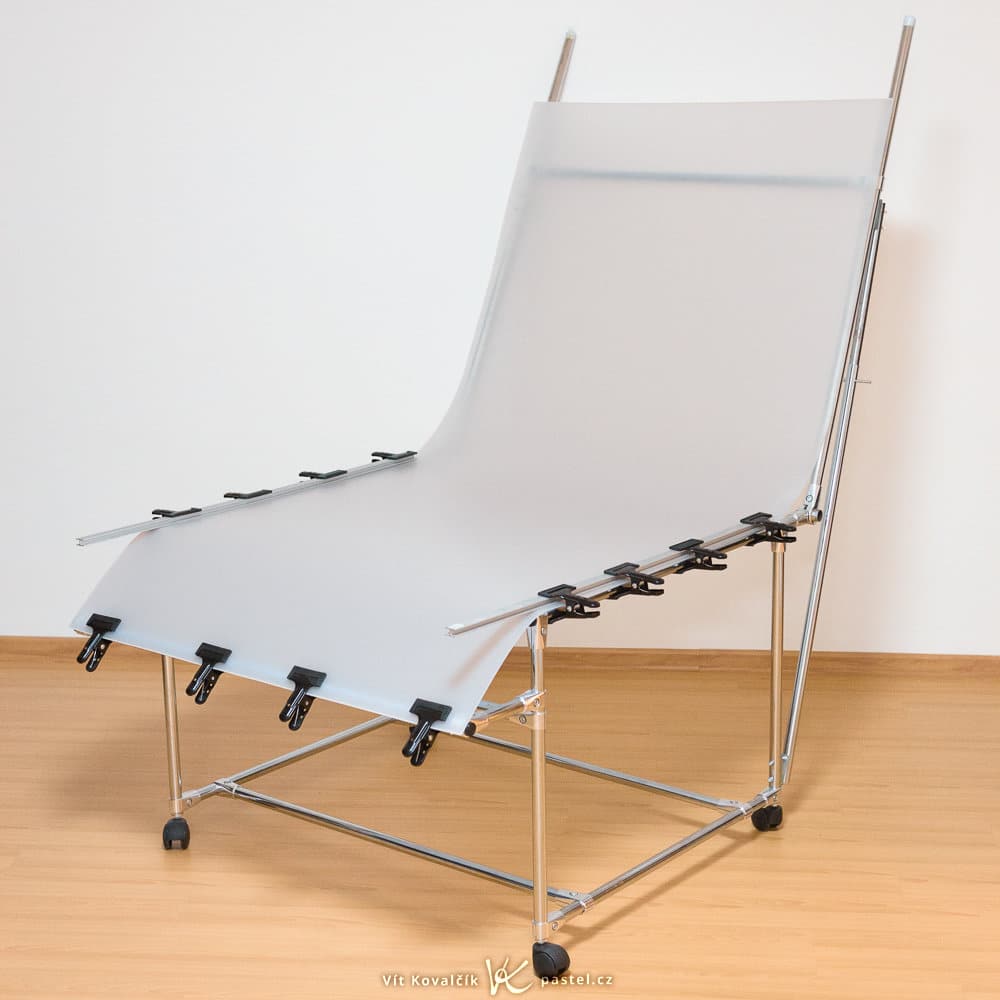
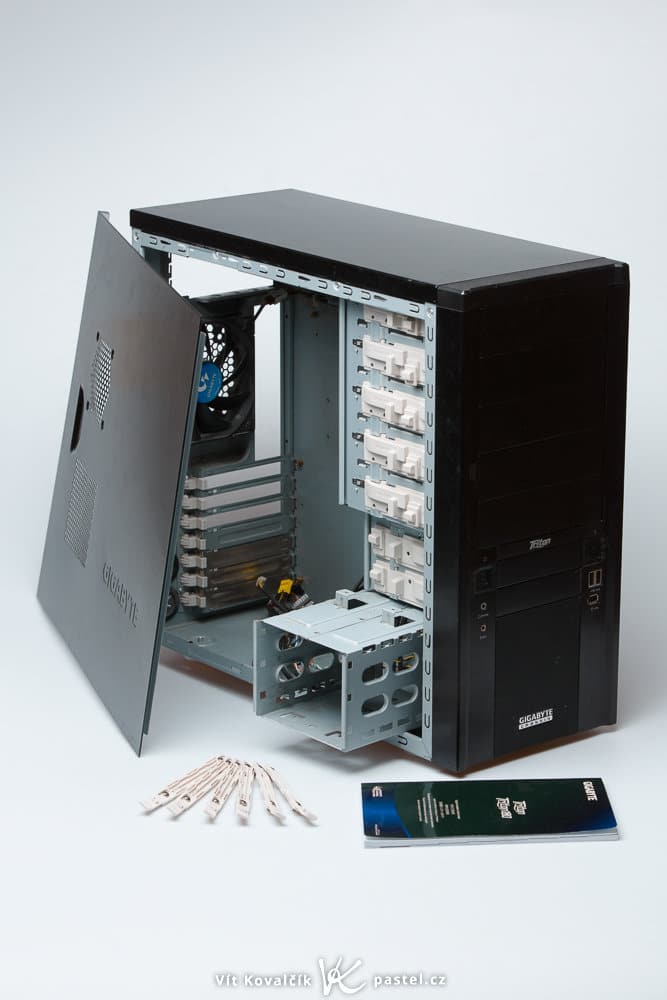
Portrait photography and larger objects
We now get to the heart of the matter. Still, even here you can avoid studio equipment by adapting your already existing furniture. The result will be a “studio corner” in a more natural setting for portrait photography rather than an empty backdrop. On the contrary, you can make the atmosphere all the more dramatic and, with the right lighting, turn an ordinary living space into something truly unique.
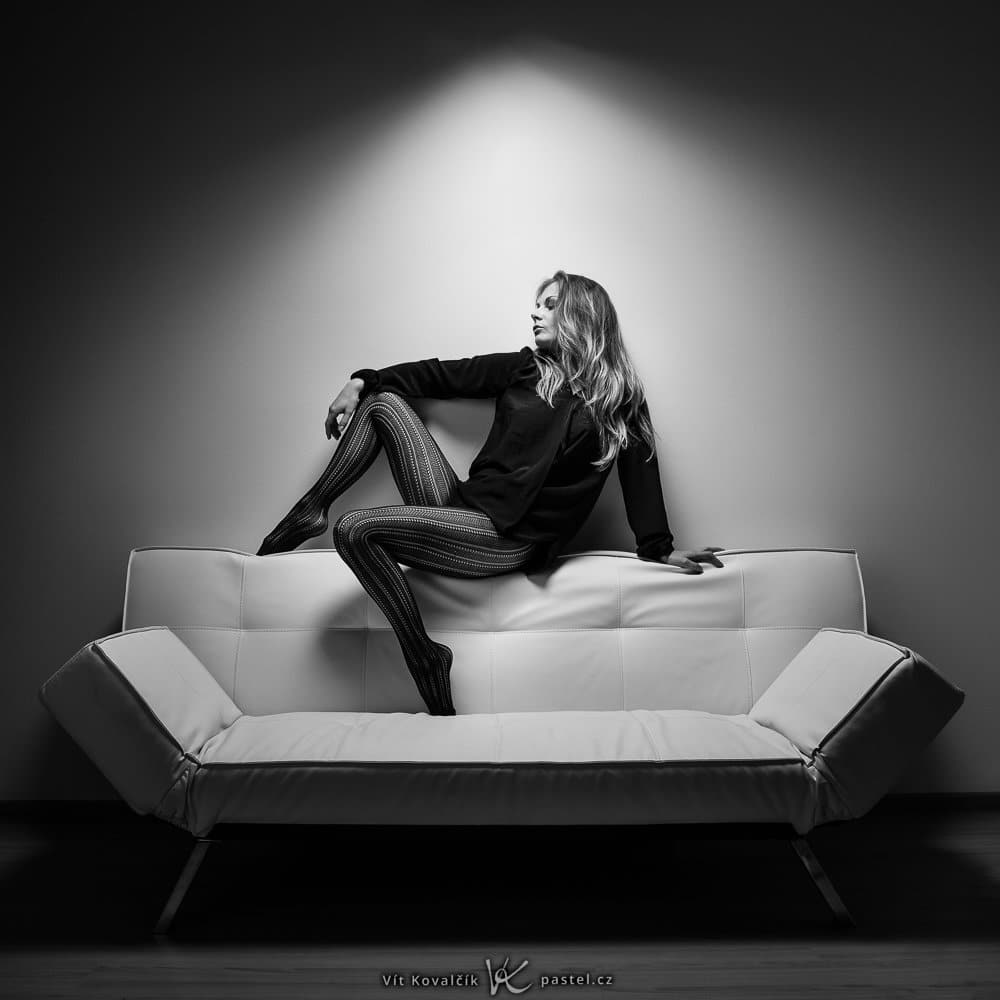
Paper backdrop
Paper backdrops are likely the most popular type of background found in photography studios. There are many colors to choose from, from neutral to more vibrant shades.
Paper backdrops can be purchased in different-sized rolls. A common size is 2.72m (8.92ft) wide and 11m (36.09ft) long. These rolls are not meant to be used all at once, but because parts of the background will be walked on and gradually sustain wear and tear, you’ll eventually need to unroll more of it.
These rolls are typically mounted to a bracket on the wall and rolled up to the ceiling when not in use. The majority of brackets can hold multiple rolls (three to six), so changing the background means rolling up one roll and unrolling another in a matter of minutes.
To avoid having to weigh down the ends of these rolls with books or by taping them to the ground when in use (I tried both back in the day), I recommend permanently securing a weighted rod or bar to the end of the roll.
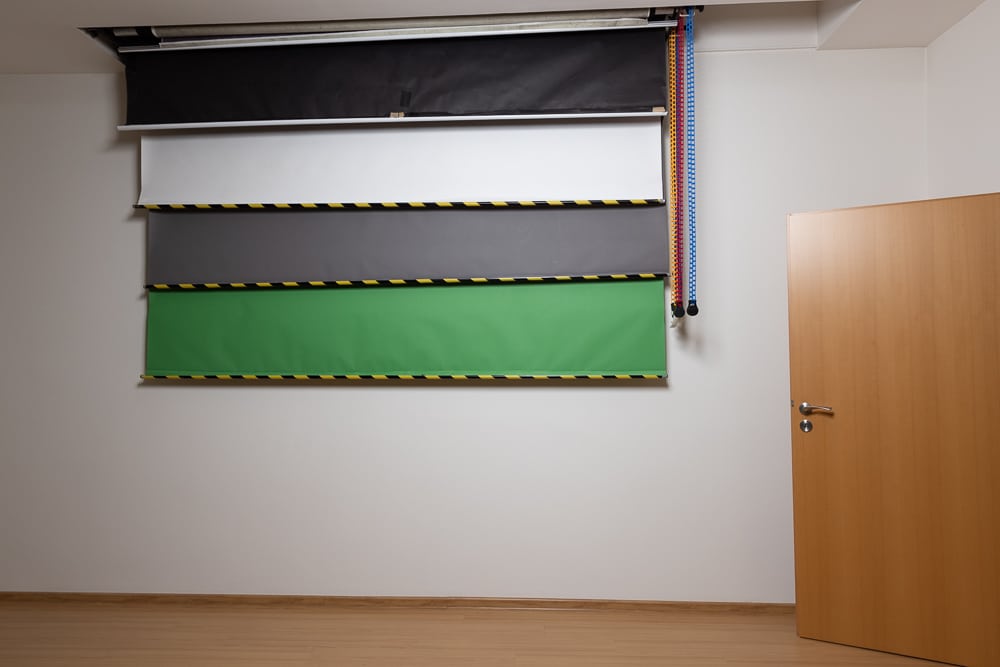
If you’re not a fan of drilling into the wall or need a more portable solution, there are portable stands for paper backdrops. These are used similarly, but will usually hold only one or two rolls and you need to watch their stability.
For very large studios, there are 3.55m (11.65ft) wide rolls. On the opposite end of the spectrum, there are mini rolls that are 1.35m (4.43ft) wide. These mini rolls are quite small for photographing people, but as long as your subjects don’t make overly large gestures, still usable, while at the same time the most portable.
It’s important to keep one thing in mind: If your studio has enough room and your model can stand further from the background, both your model and the paper behind them can be illuminated by different sets of lights. Because of this, a more separated background can look lighter or darker than it is in reality. You can also use colored lights. The advantage here usually disappears under the feet of your model (or close to them), because any extreme lighting on the background will always end up on your subject.
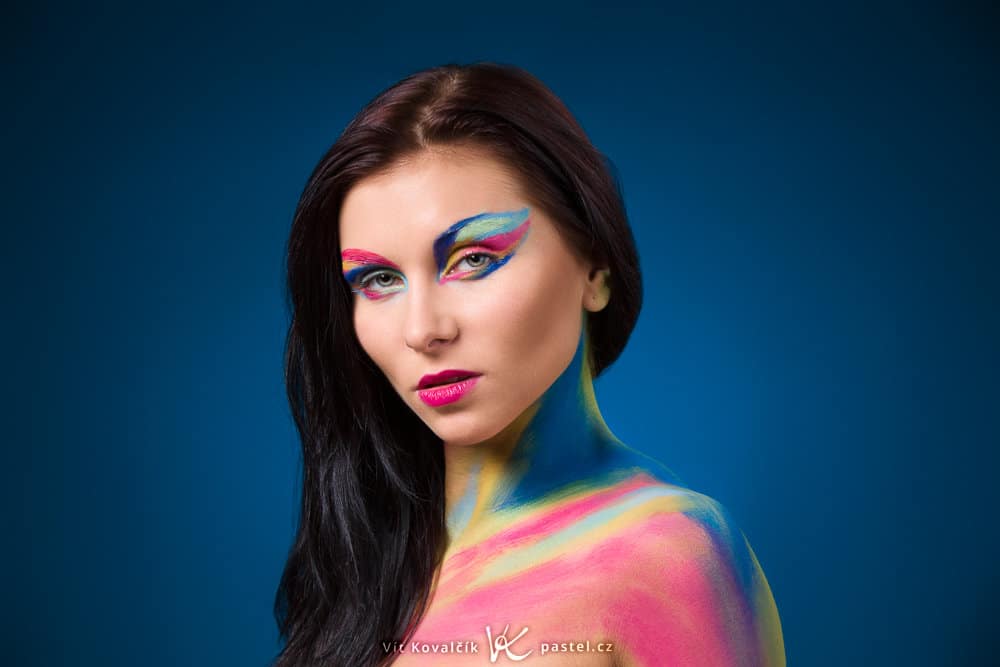
The most versatile background is medium gray, because with some adjustments, it can serve as either a white or black background.
The second most commonly used color for backgrounds is white. Black backgrounds come in handy when you don’t want even a hint of light. However, black paper is always a bit glossy, so it’s no match for black matte fabric.
Special circumstances may call for green or blue backgrounds, also known as Chroma Key, which are easily visible and can be removed in post-processing in exchange for a different digital background.
Vinyl background
Vinyl offers a solution to all the issues with paper, which include easily torn edges and gradual wear and tear. Who wouldn’t want a stable background where any dirt can be quickly wiped away with a rag?
However, there’s always a downside. In this case it’s a higher price and slight glossiness. On top of that, today’s cameras with their high resolution can end up capturing the very texture of the material itself. On the other hand, paper can also be ripped and sometimes also has a visible texture so I‘ll consider this last point a tie when comparing vinyl and paper backgrounds.
Cloth background
Unlike paper and vinyl backgrounds, cloth backgrounds won’t hold their shape. If there is someone constantly walking on it, keeping it perfectly straight is no easy task. But maybe it doesn’t need to be perfectly straight. Fabric that intentionally hangs or wrinkles yields a completely different style than any of the other methods.
Cloth backgrounds are also easy to store and in case they get dirty, machine washable.
Pattern background
It’s important to add that all background materials are available in single color as well as multi-color options with different patterns.
Cloth backgrounds, in particular, add an abstract element to the photo that won’t distract from the main subject and avoids needing to have a completely empty background.
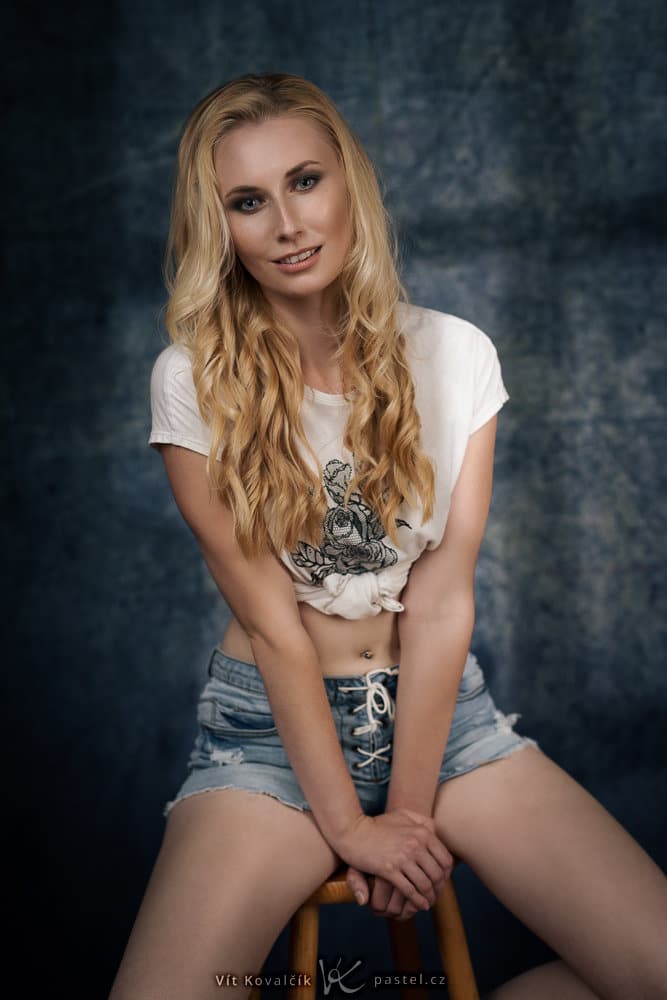
All of the materials can also be printed or painted on, so a second option is to have a specific design or photograph printed on your background. Your studio can have a background with a brick wall, hearts, or even the seashore. Of course, the photo won’t look exactly like an actual picture taken at the beach, but compared to the cost of airfare, it may be a good tradeoff for some.
Plenty of options
When it comes to photography backgrounds, this article hopefully shed some light on the many options out there. It is nowhere near a complete list of all options available as new ones are constantly being developed and go beyond those found in photography stores. Creating your own photography background can also be a great idea. Also, along with different lighting, composition, and post-processing, every background can look so unique that the viewer may not even realize they’re looking at the same one. Even a simple roll of seamless background paper can bring countless possibilities.

There are no comments yet.